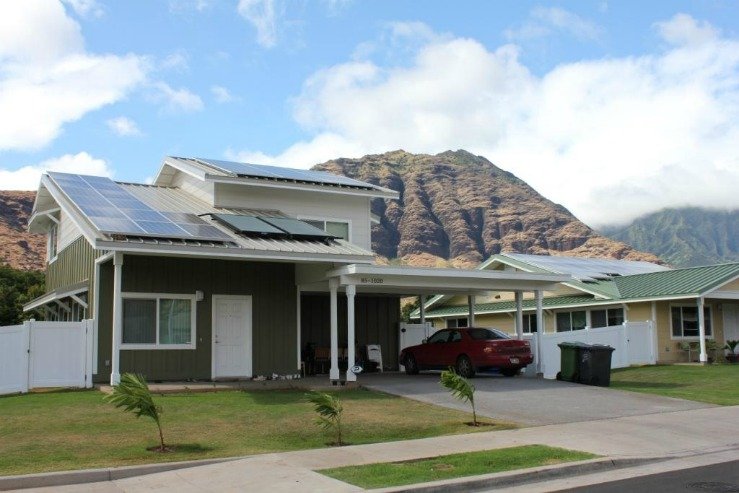Energy-efficient home design strategies are becoming increasingly popular in residential construction as more people become aware of the benefits they provide. These strategies can both reduce energy usage and save money on monthly electricity bills. In order to reduce energy consumption in your home, there are a few things you can do. Some of these strategies include improving the insulation of your walls and ceilings, installing dual-pane windows, turning off appliances when not in use, and using energy-efficient light bulbs.
What Can You Do To Save On Lighting Costs?
- One of the easiest ways to save on lighting costs is by switching to energy-efficient light bulbs. LED bulbs use up to 80% less energy than traditional incandescent bulbs and can last up to 25 times longer. Although they may be more expensive initially, the long-term cost savings make them a worthwhile investment.
- Another way to save on lighting costs is by using natural light whenever possible. Consider installing skylights or large windows in rooms where you spend the most time during daylight hours. You can also use light-colored walls and furnishings to reflect natural light and brighten up your space.
- Finally, consider implementing smart lighting systems that allow you to control when lights are turned on and off. This not only saves energy but can also enhance your home’s security by making it appear occupied even when you’re away. With these simple strategies, you can reduce your lighting costs while still enjoying a well-lit home.
Table of Contents
What Are Some Best Practices For Cooling And Heating Your Home?
- One of the best practices for cooling and heating your home is to invest in energy-efficient HVAC systems. These systems are designed to use less energy while still maintaining a comfortable temperature inside your home. You can also improve the efficiency of your current system by scheduling regular maintenance checks, cleaning or replacing air filters, and ensuring that all ducts and vents are clear of debris.
- Another practice for efficient heating and cooling is to properly insulate your home. This will help prevent hot or cold air from escaping through walls, windows, and doors. Additional insulation can be added to attics or crawl spaces as well. Additionally, using window treatments such as blinds or curtains can provide an extra layer of insulation while also blocking out sunlight during the hot summer months
- Finally, consider implementing smart thermostat technology in your home. These thermostats can learn your daily habits and adjust the temperature accordingly, providing optimal comfort while also saving energy by not running unnecessarily when you are away from home. Some models even allow you to control the temperature remotely via a smartphone app, giving you complete control over your HVAC system at all times.
How Can You Reduce Energy Consumption Through Your Windows?
Windows play a crucial role in regulating energy consumption inside your home. If not installed properly, they can lead to heat loss during winters and overheating during summers, leading to higher energy bills. To reduce the energy consumed through your windows, you can install double or triple-pane windows that provide better insulation than single-pane ones. Low-E glass is also an excellent option as it reflects infrared light and reduces the amount of heat that enters or exits your home.To design your home as energy-efficient get in touch with our team for a free consultation.
Another way to reduce energy consumption through windows is by installing storm windows that act as an additional layer of insulation. These are particularly useful for those who have old or single-pane windows that do not provide sufficient insulation against extreme temperatures. Additionally, you can use window treatments such as blinds, shades, or drapes to block sunlight during hot summer days and retain heat during cold winter nights.
In conclusion, reducing energy consumption through your windows requires careful consideration when selecting the type of window panes and accessories like storm windows and window treatments. With proper planning and installation of these options, homeowners can significantly reduce their energy bills while keeping their homes comfortable all year round.
Appliances
- One of the most significant ways to save money on appliances is by using them more sparingly. For instance, you can save on your washing machine by waiting until you have a full load before starting it, rather than running it for just a few items.
- Another way to save is by switching to more efficient models that use less energy and water. Energy Star-certified appliances are good options as they are designed with an emphasis on reducing energy usage.
- When it comes to refrigerators, going for smaller models that suit your household’s daily needs can also help cut down on energy consumption. Additionally, keeping the fridge well-stocked ensures that it runs efficiently as the contents act as insulation, limiting temperature fluctuations and reducing warm air inflow when opening doors.
- Lastly, unplugging electronics like computers and televisions when not in use saves electricity and ultimately reduces costs over time. By following these tips, you can reduce your utility bills while contributing towards creating an eco-friendly home design strategy that benefits both your wallet and the environment.
Conclusion
In conclusion, creating an energy-efficient home is not only beneficial to the environment but also to our pockets. We have learned that proper insulation of windows and doors can help reduce energy loss while also saving on heating and cooling costs. The use of smart thermostats helps regulate indoor temperatures efficiently, thereby reducing energy consumption.
Additionally, investing in energy-efficient appliances such as refrigerators, dishwashers, washing machines and dryers can significantly reduce electricity bills. Incorporating natural lighting through skylights or large windows can eliminate the need for artificial lighting during daylight hours.
Lastly, using renewable energy sources such as solar panels or wind turbines can further reduce dependence on non-renewable sources of power. In summary, adopting these strategies when designing a home can enhance its sustainability while reducing utility costs in the long run.

Be First to Comment